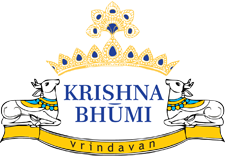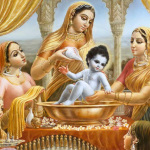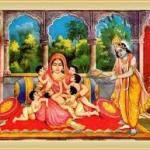Ring road around Giriraj Parikrama to be constructed soon:
A ring road will be constructed in Goverdhan to improve the connectivity of the holy town. The proposed road will run along the Giriraj Parikrama and will be called the outer parikrama. The construction of the ring road will begin soon as the first installment of the allotted fund has already been released. The proposed ring road will help Goverdhan in getting major relief from traffic congestion on weekends and on festivals.
As heavy vehicles will no longer enter the inner city, it is also expected that the pollution levels will go down drastically. However, the ring road will not pass through Radha Kund and will be constructed in such a manner so that the road bypasses it.
Vrindavan Civic Body upgraded to ‘A’ category
The civic body of Vrindavan has been upgraded to ‘Grade A’ municipality by the State Government in a cabinet meeting that was chaired by the U.P Chief Minister, Shri Akhilesh Yadav. Vrindavan happens to be a pilgrimage town which attracts masses of tourists and pilgrims from around the world and the existing B grade municipality could not provide much facility to the visitors as well as the residents of the town.
There was already a growing demand to expand the boundaries of the Vrindavan Municipality. People were demanding that the colonies that have developed on the outskirts of Vrindavan be included within the Municipal limit. Several colonies have already been developed by the Mathura Vrindavan Development Authority or the MVDA, as they are more popularly known.
Around 35 villages, partially or in full will be included in Vrindavan’s new municipal limit and they will get to avail more facilities once the formal upgrade is made. Not to mention that the existing facilities will also be upgraded with this move by the Government. It is hoped that the working of the Municipality will become a more transparent process and the garbage and sewer management problems will also be taken care of.
This new status of Vrindavan is set to ensure rapid development of the town, expansion and strengthening of the infrastructure, better civic amenities and facilities like parks, playgrounds, streetlights and better roads for the people.
Gods awaken and Shaligram marries Tulsi in Vrindavan temples
Thousands of devotees took an early morning dip in the Yamuna to welcome the Gods who have woken up from their four month long slumber on Devotthan Ekadashi. The devotees from Vrindavan performed the Panchkosi Parikrama of Vrindavan while the devotees of Mathura performed the Teen Van Parikrama. The occasion is celebrated in Vraja region in a grander manner than Diwali.
On this occasion the marriage ceremony of Tulsi and Shaligram was also performed in the various temples of Vrindavan. The divine marriage ceremony was conducted with great devotion and holiness. The temples of Radha Shyam Sundar and Radha Damodar especially attracted a big number of devotees to witness the divine marriage. The pandas of Mathura and Vrindavan conducted ritualistic pujas for their yajmans at the various ghats of Yamuna.
The waking up of the Gods marks the beginning of the marriage season and the Tulsi Shaligram Vivaah is symbolic of this.
‘Kamsa Vadh’ commemorated as his effigy is ripped into pieces
When Kamsa Vadh is celebrated in Mathura, the city comes alive and becomes colorful. An effigy of Kamsa is made and people gather around to thrash it with sticks. This is a reenactment of the freedom that was attained from the cruelty of King Kamsa due to the bravery of Lord Krishna. Usually, a grand procession of Krishna and Balarama sitting on an elephant is taken out in the city.
The young boys of the Chaturvedi clan in Vrindavan carry sticks in their hands and walk with the procession. They also don traditional clothes for this occasion. The devotees stand in queues on both sides of the road to witness Krishna and Balarama going to kill Kamsa. They also shower flowers on the procession. Finally, the procession reaches the place where the effigy of Kamsa is kept and people begin beating it with sticks after taking permission from Lord Krishna.
The celebration reaches its climax as the effigy is finally ripped into pieces. The festival is organized by the Mathur Chaturved Parishad every year.
Thousands of couples perform Jugal Jodi Parikrama on Akshaya Navami
Devotees performed Yugal Jodi Parikrama of Mathura and Vrindavan together on Wednesday. Thousands of devotees performed parikrama in couples. Performing Parikrama of the twin cities of Mathura and Vrindavan on Akshay Navami has special significance.
The meaning of Akshaya, is inexhaustible, something that doesn’t decay or perish. People performed Parikrama to acquire the inexhaustible knowledge of the Divine and thereby attaining the bliss and peace.
The devotees undertook parikrama (circumambulate) of the twin city of Mathura and Vrindavan. They came out of their homes early in the morning before sunrise, barefoot, walked down to Yamua, took a holy dip, worshiped Yamuna, smeared a Vraja raja on their foreheads and then started the Parikrama.
Social organizations had put up free water and food stalls at most of the road crossings. The First Aid camps were also put by the Civil Society organizations. The District Authorities had made elaborate security arrangements to ensure free movement of the devotees. Traffic restriction and ban on the entry of the heavy vehicle made it easy for the devotees.
The devotees went around the holy cities of Mathura and Vrindavan after smearing ‘raja’. After they started from Vrindavan, walking along the holy river Yamuna, they offered their respects at various temples – Shri Madan Mohan Mandir, Shri Banke Bihari Mandir, Shri Radha Ballabh Mandir, Kaliya Dah, Cheer Ghat, Nidhivan, Radha Raman, Keshi Ghat, Gopeshwar Mahadev, Jagannath Ghat and finally Chamunda Devi in Vrindavan.
Then they walked towards Mathura, along Yamuna taking the same rout as taken by Lord Krishna when He left Vrindavan on the invitation of His maternal uncle Kamsa, and offered prayers at Akroor Ghat temple on their way.
On entering Mathura they worshiped Yamuna again at Vishram Ghat, offered pooja at Dwarkadheesh Temple, Rangeshwar Mahadev, Bhuteshwar Mahadev and Shri Krishna Janmasthan. Then they walked back to Vrindavan through the forests and grass lands where lord Krishna used to graze cows.
Though the Parikrama was very tiresome, but the devotees enjoyed doing this. It is mentioned in the Varah Puran that residing just one day in Vrindavan equals to residing 1000 days in Varanasi.
The women worshiped the Amla Trees, and prayed long life for their husbands.
UP Tourism to execute beautification project around Banke Bihari
A team from the World Bank visited Vrindavan’s Banke Bihari Temple area on Thursday. It came here to study a Tourism Development Project, proposed by the UP Tourism. The World Bank is funding a beautification project in the surrounding areas of the Banke Bihari Temple. This project aims to provide basic facilities to the devotees apart from giving the area a traditional look.
Mr. David, the Asia head of the World Bank, informed the media persons, that 21 lanes around the Banke Bihari Temple will be repaired and upgraded. Special tiles having a heritage look will be laid on these lanes. Lamp posts will be erected in this lane, so that the pilgrims don’t face problem in walking at night. Drinking water facilities will be installed for the visitors.
Special pathways will be developed connecting the Banke Bihari Mandir with the other temples of Vrindavan. The department will put up information and signages on the pathway. The work will begin soon.
The developmental project will cover 14 kilometers area altogether.
The lanes from Vidyapeeth chouraha to Nidhivan, Harinikunj Chauraha to Seva Kunj via Dusayat Mohalla, Kalidah to Banke Bihari Mandir, Ratan Chhatri to Banke Bihari Mandir and Parikrma Marg will be beautified. Any hurdle in form of encroachments coming on the way of the beautification project will be removed.
Later the team reached to Govinda Kund, in Govardhan. They studied the restoration plan of the kund and discussed how the polluted water of the kund will be emptied. The ‘burjis’ (stone canopy) of the kund will also be renovated.






